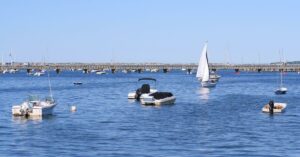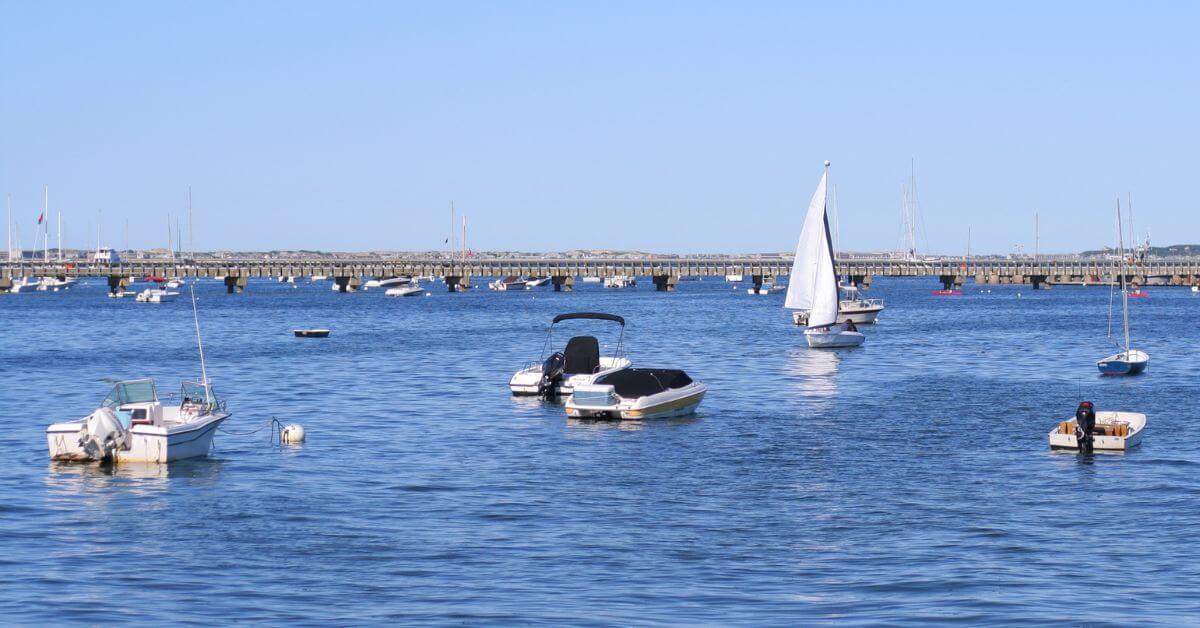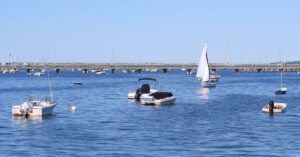WHOI’s Plan Of Dumping 20 Tonnes Of Lye Off Cape Cod For Ocean Alkalinity Study Criticized By Environmentalists

Cargo Ship’s Cook Found Dead With “Marks of Violence” In The Port-of-Spain
July 17, 2024
U.S. Navy Exonerates 256 African-American Sailors Punished After 1944 Port Of Chicago Explosion
July 18, 2024

Massachusetts fishermen and environmentalists are strongly criticizing a new climate-saving experiment planned by experts at the Woods Hole Oceanographic Institution (WHOI).
The plan calls for dumping more than 60,000 gallons of sodium hydroxide, commonly referred to as lye, into the waters off Cape Cod to investigate its potential for increasing ocean carbon dioxide (CO2) uptake.
The LOC-NESS (Locking away Ocean Carbon in the Northeast Shelf and Slope) project seeks to study the environmental implications of ocean alkalinity enhancement (OAE) and establish how much CO2 this method can realistically remove if scaled up.
OAE involves adding alkaline compounds to seawater to lower acidity, increasing its ability to absorb CO2 and combat climate change.
The trial will release around 6,600 gallons of lye 10 miles south of Martha’s Vineyard, with a larger-scale operation scheduled for next summer in the Gulf of Maine.
Despite the support of some marine scientists and regulators, local stakeholders, such as fishermen and environmental organizations, have expressed serious concerns.
Critics argue that even a small-scale trial might endanger marine life and disrupt fishing activities.
The New England Fishermen’s Stewardship Association, Friends of the Earth, and other advocacy groups have raised concerns with the Environmental Protection Agency (EPA), which examines the project permit.
Fishermen are especially concerned about the potential economic harm.
Robert Scammon, a commercial groundfish captain with 37 years of experience, stated that the test region has historically produced 30-40% of his catch.
Jerry Leeman, CEO and the founder of the New England Fishermen’s Stewardship Association, warned that the project might destroy the local economy and damage commercial and recreational fisheries.
Environmentalists warn about the dangers of sodium hydroxide, which can cause chemical burns on skin and marine animals.
Benjamin Day, a senior campaigner with Friends of the Earth, criticized the idea of dumping massive amounts of this toxic material into the ocean, citing hazards and uncertainties identified by the United Nations Convention on Biological Diversity.
WHOI scientists insist the project will stay within a safe pH range for aquatic life while complying with thorough environmental monitoring standards.
The research team intends to regularly monitor the alkalinity patch using various devices and sensors to determine its impact on water chemistry, the marine food web, and larger organisms.
Dan McCorkle, co-lead researcher, emphasized the importance of researching new climate mitigation measures such as OAE in light of the current climate crisis.
He emphasized that research should be science-based and aimed at determining the feasibility and safety of such procedures.
The Massachusetts Office of Coastal Zone Management supports the study, with director Alison Brizius citing its potential to inform future marine CO2 removal research and applications.
The EPA’s decision on the permit will be critical in determining if the LOC-NESS project goes as planned.
As the discussion continues, the stakes are high for environmental conservation and local fishermen’s livelihoods, highlighting the delicate balance between new climate solutions and marine ecosystem preservation.
Reference: bostonherald
WHOI’s Plan Of Dumping 20 Tonnes Of Lye Off Cape Cod For Ocean Alkalinity Study Criticized By Environmentalists appeared first on Marine Insight – The Maritime Industry Guide
Source: Maritime Shipping News


